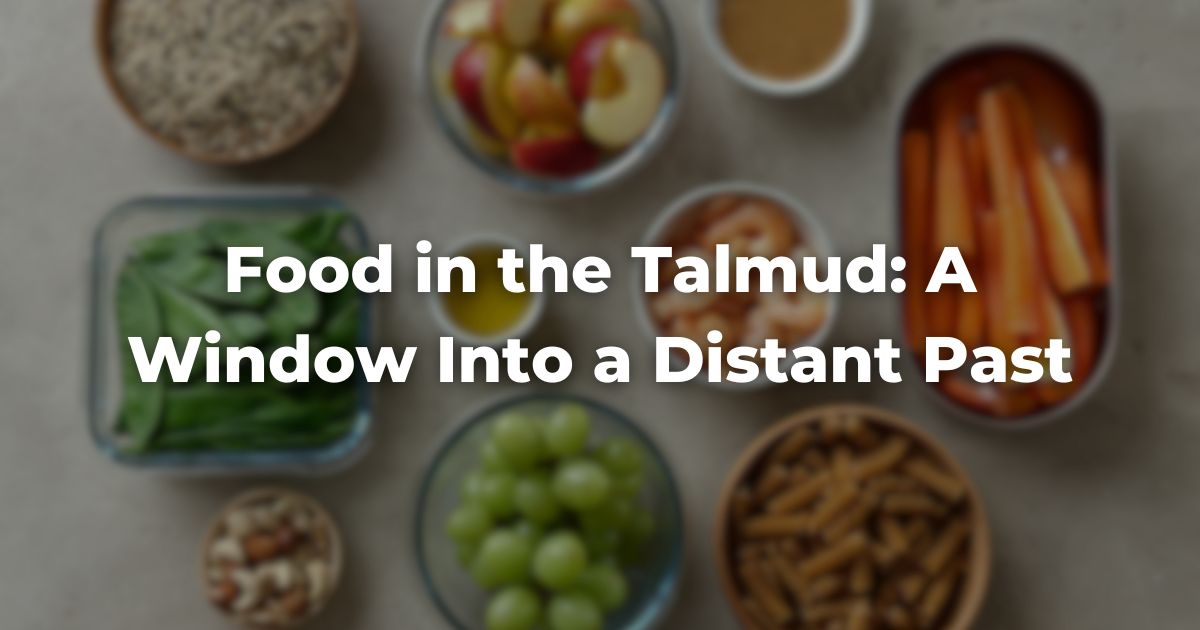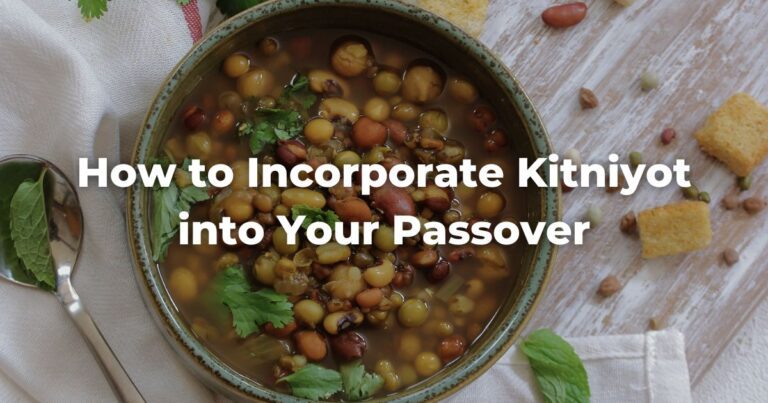Throughout the TalmudReferring to one of two collections, the Jerusalem and Babylonian Talmuds, edited in the 6th century, that contains hundreds of years of commentary, discussion, and exploration of the ideas in the Mishnah. One could describe it as Mishnah + Gemara = Talmud Read more, one can find rabbinical discussions about a very diverse range of topics, and food is a common theme. Through a close reading of the Talmud, we can understand the eating habits of Middle Eastern Jews who lived nearly 2000 years ago.
There are references to dietary laws, known as kashrut, but also about recipes, advice to keep a healthy diet and the spiritual relationship one should have within food. During that time, eating habits were also established to provide cultural boundaries between the Jewish People and their neighbors. This article will give you a glimpse of these windows to the past.
What is the Talmud?
The Talmud begins with another text called the MishnahA collection of rabbinic teachings edited in Israel around 225 CE. Organized in six sedaraim by subject matter and dealing with both ritual and civil law. Both the Jerusalem and Babylonian Talmud are expansive discussions of the Mishnah. Read more. The Mishnah is the written text of the oral law written in Hebrew between the 1st and 2nd century, just after the destruction of the Temple in 70 CE. It was compiled by Rabbi Judah HaNasi, the last of the Tannaim, the early rabbis of that era.
Over the following centuries, additional comments by the rabbis added to this oral law is called the GemaraThe discussion portions of the Talmud based on the quoted Mishnah. Read more, and it is written mainly in Aramaic. Together, the Mishnah and these oral comments are known as the Talmud.
Foods That Heal and Foods That Harm
In ancient times, food and health were much more connected than in modern times, as eating the wrong ingredients could have devastating consequences. The knowledge regarding bacteria and toxic products was not yet fully understood, as microscopic life was unknown. Despite their lack of understanding, the rabbis of the time had wisdom, via observation and oral tradition their teachings are inspiring, but clearly not a guide of modern medicine.
The Talmud is a valuable source of some of this experimental knowledge, and a good example is in Berakhot, the first section (tractate or masechet) of the Talmud.
In this discussion, the Talmud mentions products that can contribute to recovery from an illness and the ones that could make it worse. It also portrays some products for which there is no clear opinion, like nuts and cucumber, probably because of allergies or personal intolerance.
Six matters cure a sick person from his illness, and their cure is an effective cure. They are: Cabbage, beets, dried foley, a medicinal plant, the stomach, the placenta, and the diaphragm of an animal. Some say that small fish also possess these qualities.
Furthermore, small fish cause one’s entire body to flourish and become healthy. In contrast, there are ten matters that cause a sick person who has recovered to suffer a relapse of his illness, and his illness is even more severe, and they are: Eating ox meat, eating fatty meat in general, eating roasted meat, eating poultry, eating a roasted egg, shaving, eating cress, drinking milk, eating cheese, and bathing in a bathhouse. And some say eating nuts, and some say even eating cucumbers. (Berakhot 57b:15-17)
As we can read from the text above, products such as cabbage, beets, medicinal plants, the placenta and stomach of an animal and small fish can be highly beneficial for someone´s health. With today’s knowledge we are aware of the nutritive components of the products mentioned above that can indeed contribute to someone’s recovery. Beets and cabbage are still very widespread in Jewish cooking, present in the Ashkenazi, Sephardic, and Mizrachi traditions.
On the other hand, the second list, associated with a relapse of their illness, are mostly fatty and heavy foods like meat, cheese, eggs and milk. Cress is known to be easily contaminated if it is not properly grown or kept and bathing brings fast temperature changes in the body, which can lead you to catch a cold.
It is not really clear why shaving can have such an effect, maybe the hygiene conditions of the time made shaving a risky business in terms of infections. Nuts are very nutritious, but it is well known that some people are allergic, while others are sensitive to cucumbers, as they trigger a bloated stomach.
Eating in Ancient Jewish Society
The Talmud is also a window into the culture of the ancient world. In Tractate Nedarim, there are long discussions regarding the habit of the Babylonians to eat bread with porridge, which was seen as an extravagant and foolish habit by the rabbis. There are also deep discussions regarding the custom of some people to eat porridge using their hands, instead of a spoon. (Nedarim 49b:3-8)
These cultural distinctions highlight personal habits and cultural boundaries, to show that we are not only what we eat, we are also also represented on how and when we eat. The “timing” for eating is beautifully described as follows in the tractate of Shabbat depicting how many hours into the day someone might eat breakfast:
The Sages taught in a baraita: Eating in the first hour of the morning is the time of eating for Ludim, who are members of a nation of cannibals, and they are ravenous and hurry to eat. The second hour is the time of the eating of robbers. Since they spend the night stealing, they eat early in the morning. The third hour is the time of eating for heirs, i.e., people who inherited a lot of money and do not work for their sustenance. Their only preoccupation in the early hours of the morning is eating. The fourth hour is the time of eating for workers. The fifth hour is the time of eating for all people. (Shabbat 10a:7)
At a first glance, you might think that it is about when we eat, counting hours based on 60 minutes since the moment we wake up. But with a close reading, one realizes that these hours are not literal, and are much more about a priority of setting for a spiritual approach, in order to nourish the soul and the body. We don’t want to be like cannibals, or robbers, or people who do not need to care about working, or workers who just want to feed their bodies to get the energy they need.
We should search for the balance between caring for our souls and our bodies. A Jew is expected to wake up and say prayers, wash hands, and continue with a very detailed ritual of prayers of gratitude and of praising G´d. Only after finishing these rituals that prepared and cleaned our soul and body, we are finally ready to have breakfast.
In summary, the Talmud represents a window to look into the lives and flavours of the Middle East in ancient times. The Jewish scholars of the Talmud mention food in different contexts, like how to keep the Jewish dietary laws, as a source or medical advice, a way of establishing ethical standards and a strategy to structure cultural boundaries with other cultures. Exploring it can be a fascinating journey through health concerns, cultural practices, and a path to know about their fears, joys and their way to balance spiritual and physical needs.
Food is a way to discover multiple layers of knowledge, connect to an ancient memory, and an invitation to revisit the lives of our distant ancestors in one of the most basic and powerful ways of all: sitting by their table. If you want to learn more, you just have to search keywords like “food,” “kashrut,” or “eat” in the Talmud, now fully available online and translated into English in Sefaria.
Author
-

Journalist. Msc. in Anthropology. She was a fellow in the first cohort of the Exploring Judaism's Writer's Fellowship. South American Rabbinical Student in Europe. Mother of two fantastic daughters. Love to practice yoga, meditate and to cook for family and friends. Currently doing research on food & identity for Phd on Jewish Theology at Paderborn University, Germany.
View all posts






